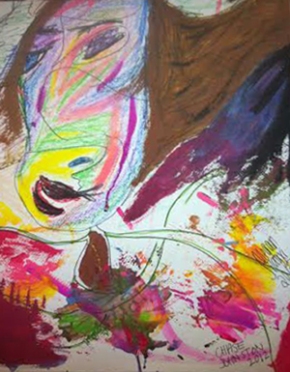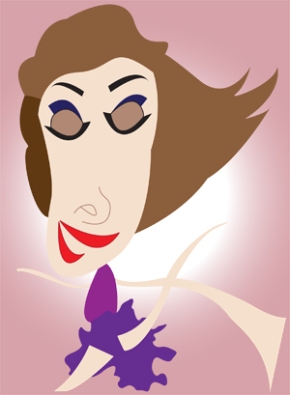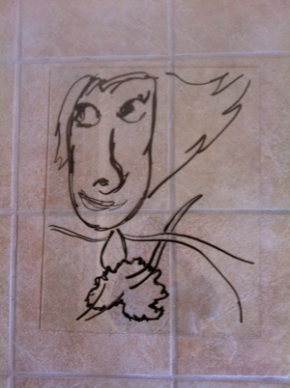Right on the coast of Lake Michigan located in the North Side of Chicago is an eleven acre stretch of land called Montrose Point. This is the largest city beach in Chicago. It is made up of a beachfront, sand dunes, harbor, hedges, meadow, and shrubs. It is mostly flat with several small, narrow, dirt paths. The land was planted and designed in the early 20th century following a prairie style landscape. Montrose Point includes areas for beach volleyball, bird watching, boating, and a dog park.
The area was originally used as a landfill. The city of Chicago eventually saw this barren land as a chance to revitalize the North Side and bring some new forms of entertainment to the citizens. The city brought in sand from the shores of Indiana to create a nice beach and park. The area today is used widely as a bird sanctuary for migrating birds flying through the area.
The park was based on Jens Jensen’s prairie style landscape. The landscaping was done by a Jensen influenced student, Alfred Caldwell; a St. Louis Native, who is best known for his landscaping throughout the Chicago area including the Lily Pool in Lincoln Park.
The vegetation around Montrose Point is not all completely native. In recent years conservationists have managed to plant many more native plants and grasses to the area like eurasian grasses, milkweed, and thistle including a variety of trees and shrubs as well. Montrose Point also has a variety of non-native plants along with some invasive plants in which conservationists are working to keep under control. These invasive plants are the sand reed, cottonwood, and sandbar willow. The most famous of these invasive plants is the honeysuckle shrub, better known as the ‘Magic Hedge.’
The ‘Magic Hedge’ was planted during the Cold War era to help disguise the war barracks that were built there. The hedge covers about 150 yards of the shoreline and has been unkept for several years adding to the hedge’s invasive size. This Magic Hedge is more commonly known as a brush honeysuckle which is most commonly found on the East coast as an invasive pest. The Magic Hedge has now become a stopping point for many native birds in the Chicago area, along with many different types of birds migrating through the area. New, non-native birds have been spotted every year, and the list of birds travelling through Chicago has grown every year. Native plants and shrubs are even more valuable as they hold a larger number of small animals and bugs that birds and other wildlife can feed on.
The native species of birds in the area are the Canadian geese, the ring billed gulls, mallards, killdeer, and spotted sandpipers. Some migrating birds that travel through the area are the trumpeter swan, the bald eagle, and the white pelican. There is also the occasional lost pet roaming the area like the escaped cockatiel or the parrot. There is a list of 330 types of birds spotted in the area, and each year the list continues to grow.
These birds are attracted not only to the native vegetation around Montrose Point, but also the non-native plants. Magic Hedge is the most important vegetation on Montrose Point for these birds. Not only does the nectar from the honeysuckle attract wildlife, but the expansive hedge also provides a perfect shelter for many different animals. Even though this hedge is not a native plant to Montrose Point, it is a very important part of the wildlife and the wildlife’s survival on Montrose Point.
The Magic Hedge is not a native plant to the area, and was never originally part of the design created by Alfred Caldwell. The hedge was planted years later by the US government to block the view of the barracks built there during the Cold War. Caldwell was a student that followed the teachings of Jens Jensen, famous for stylizing the Prairie landscape design.
Caldwell’s designer centered around a mowed meadow, which was the area that was to be used for recreational purposes. The outside edges of the meadow was to for the native vegetation to grow and flourish. The outer side of the meadow was for tall grasses, shrubs, and trees formed in clumps to not block the view of the lake or the city. The magic hedge was planted disregarding Caldwell’s original design. The hedge blocks the views of both the city and the lake depending where one stands in the meadow area.
Sand from the Indiana coast was shipped in to create the beaches we see today. The sand would be combed every year to keep it flat and even for the next year’s beach goers. After a few years of the beach not being combed, conservationists began to notice the formation of dunes. The dunes were formed naturally and are the only known dunes in the Chicago area.
The dunes were formed from wind erosion and fluctuation in Lake Michigan’s water level over the years. These dunes are still forming and constantly changing. This today has created two parallel ridges in the sand. Between these ridges holds a panne, which is home to a few different native sand dune grasses, sedges, and herbs. This panne has been marked by the Illinois Department of Natural Resources and is only one of a few hundred known of world wide.
The panne being one of only one hundred known in the world, it is important to keep these sand dunes natural and growing. In regards to the natural occurring dunes and the natural vegetation, would it be considered important to keep only the natural vegetation around and destroy all non-native plant life? In destroying the non-native plant life, ie. Magic Hedge, the ecosystem that is keeping the wildlife striving in Montrose Point would be gone and wildlife would then disperse.
This is the issue Chicago Park District is facing today, keep the non-native, possibly invasive plant life, while maintaining the natural vegetation, or destroy the non-native plants and drive out the wildlife. Keeping non-native plants will also go against the prairie style landscaping Caldwell envisioned. If the honeysuckle brush is pulled out and replaced with another large, native shrub, this would prove to be more beneficial due to the larger number of insects living in native shrubs versus the almost non-existent insect life living in non-native plants. Chicago Park District is working to implement a new prairie design rooted by Caldwell, while keeping the currently planted vegetation. This task is going to be a long and daunting project, but something that will beautify and revitalize the wildlife and recreational use of Montrose Point.


 Back in my good ‘ole college days, when I could drink an entire fifth of classy Burnette’s and still make it out until 3am, my roommate Megan and I created this beautiful masterpiece, after drinking an entire fifth together. We named her ‘Lady of the Night.’ Our other roommates woke up to this lovely piece and to our horror were informed that it was the ‘ugliest’ and ‘most horrendous’ piece of artwork they’ve ever seen. So of course I would end up hanging this in my first home. On my wall is ‘Lady of the Night’ on display for everyone to view. After a few people came over and called this painting ‘interesting,’ among other words, I decided to make another version to go next to it. A more, if you will, ‘acceptable’ version. Here’s to all those that informed me that ‘Lady of the Night’ was not beautiful. We create our own beauty. And now I unveil the ‘Night Dancer.’ Created in Adobe Illustrator. So technically it’s an illustration and not a painting; I created my initial outlines using a dry erase marker on the glass and snapped a shot of it with my phone to create the illustration. They’re both equally creative, they’re both equally beautiful, and both hold many memories and many stories to be told.
Back in my good ‘ole college days, when I could drink an entire fifth of classy Burnette’s and still make it out until 3am, my roommate Megan and I created this beautiful masterpiece, after drinking an entire fifth together. We named her ‘Lady of the Night.’ Our other roommates woke up to this lovely piece and to our horror were informed that it was the ‘ugliest’ and ‘most horrendous’ piece of artwork they’ve ever seen. So of course I would end up hanging this in my first home. On my wall is ‘Lady of the Night’ on display for everyone to view. After a few people came over and called this painting ‘interesting,’ among other words, I decided to make another version to go next to it. A more, if you will, ‘acceptable’ version. Here’s to all those that informed me that ‘Lady of the Night’ was not beautiful. We create our own beauty. And now I unveil the ‘Night Dancer.’ Created in Adobe Illustrator. So technically it’s an illustration and not a painting; I created my initial outlines using a dry erase marker on the glass and snapped a shot of it with my phone to create the illustration. They’re both equally creative, they’re both equally beautiful, and both hold many memories and many stories to be told.
